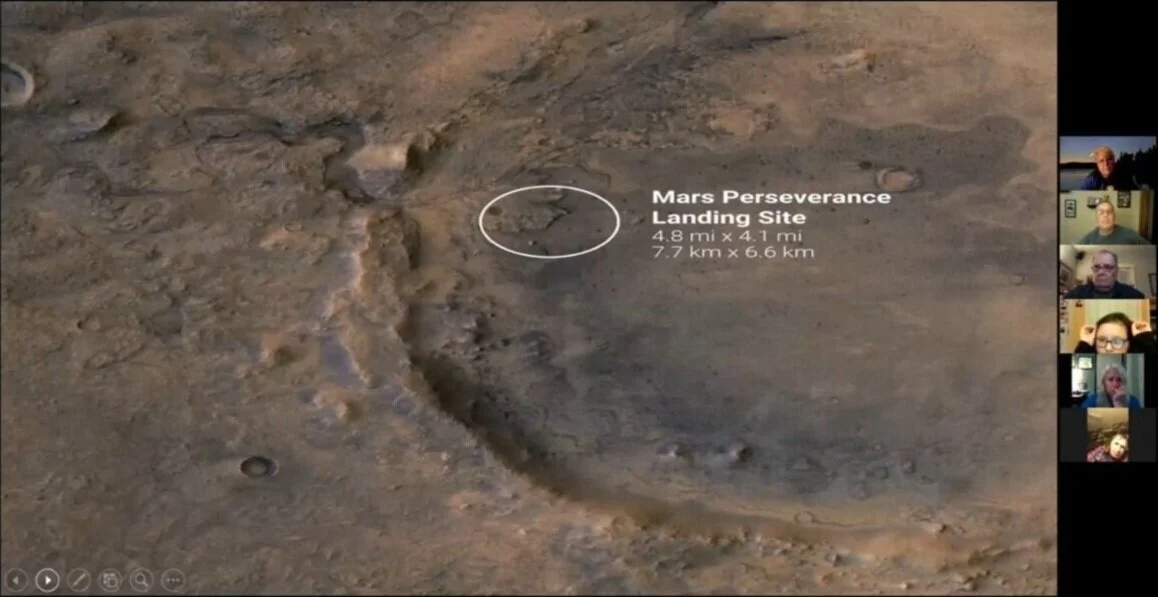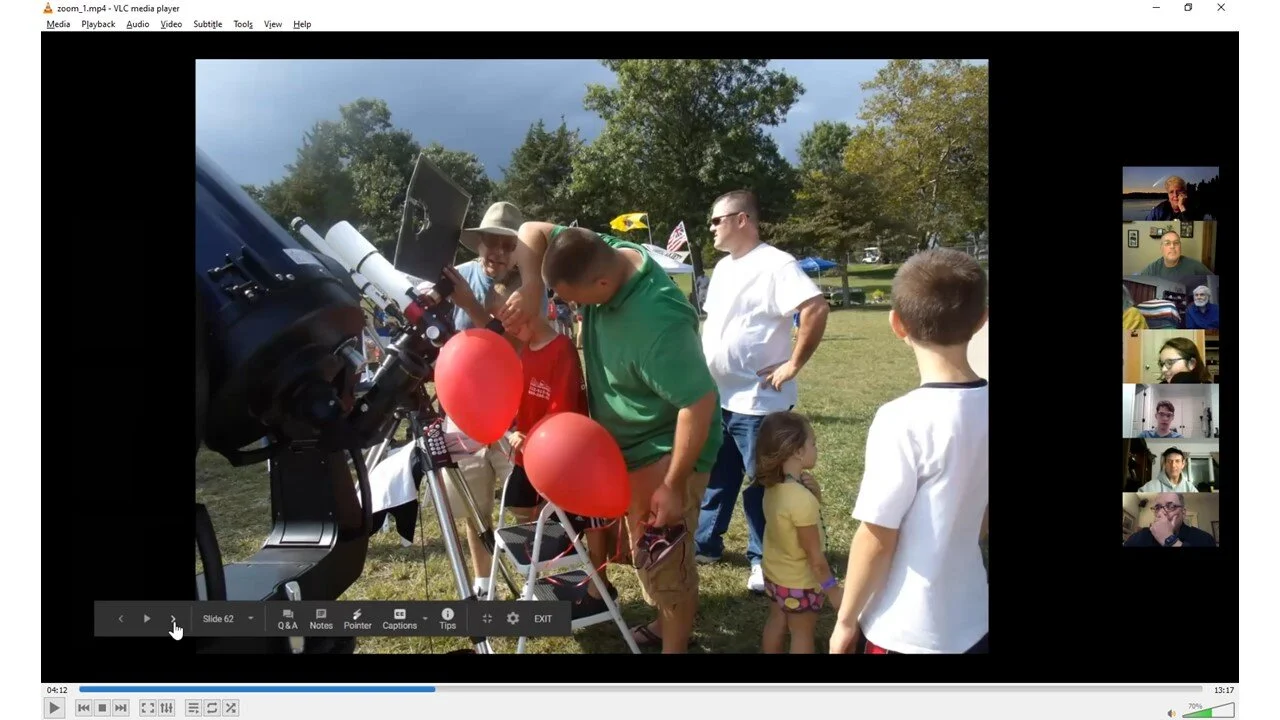Astral Projections Online March 2021
ASTRA held its virtual club meeting on February 12, 2021. We will continue the virtual meetings via Zoom during COVID. If you can’t participate because of issues with Zoom please contact us.
Club dues and 2021 membership. We are still collecting dues/membership for 2021. Returning members should renew by March 31. If you renew after March 31 you will be renewed as a new member.
NOTE: Those members that paid for 2020 will be carried over to 2021 and should have been notified.
Please check our Website for updated content at www.astra-nj.com
Astral Projections Online distribution update - Due to some resource material, APO will now be estimated to be distributed sometime in the first week of each month.
ASTRAL PROJECTIONS ONLINE (APO for short) is an email-linked publication for members only. If you exit APO to the club website or other resources you will need to use the emailed link again to get back to it. If you wish to retain a copy please bookmark or refer back to the email. We will make all efforts to post by the first week of the month.
Submissions Welcome: Members are invited to submit articles, photos, news, or stories for inclusion with Astral Projections Online. Please contact the ASTRA Webmaster.
Event Calendar
ASTRA’s next virtual meeting is on Friday, March 12, 2021, at 7 PM.
Please note at this time future in-person events will be canceled for the duration of the Coronavirus / CONVID-19.
Please check your emails for updates.
EVENT Cancellations: Members will receive email notification of an event cancellation, or call the ASTRA Hotline: 609-971-3331
Website Updates …
There have been several additions to our club website. If there is some content that would be useful to members please let us know.
"Man must rise above the Earth—to the top of the atmosphere and beyond—for only thus will he fully understand the world in which he lives."
- Socrates, Philosopher
Images of Mars landing from NASA via YouTube.
Club Virtual Meeting - Upcoming Mars Landing - Rosemarie Spedaliere
Rosemarie Spedaliere provided to the membership an overview of the upcoming Mars landing that was scheduled for Feb 18, 2021. The presentation was a mix of PowerPoint presentations with some YouTube videos followed by a general discussion from the membership that was present at this event.
The Mars 2020 mission’s main goal via the Rover: Perseverance, is to seek signs of ancient life and collect samples of rock and regolith (broken rock and soil) for a possible return to earth. Was launched July 30, 2020, with a set landing date of Feb 18, 2021. The landing location is the Jezero Crater. One of the other missions is the tech demo of the Mars Helicopter. It’s a technology demonstration, that is hitching a ride on the Perservance rover.
After traveling nearly 300 million miles (470 million km), NASA’s Perseverance Rover will complete its journey to Mars, but to reach the surface it has to survive the harrowing final phase to the surface of the Red Planet. The rover’s new home is the Jezero Crater, a large impact crater of about 28 miles wide, just north of the Martian equator.
Jezero once contained a lake which scientists think is one of the most ideal places to find evidence of ancient microbial life. If life exists anywhere else in our solar system, chances are, it might be at Jezero Crater. There is evidence that water flowed into and out of the crater from the images below. Click on each of the three Mission Overview images below to view. The last image is the most likely of places to search, a preserved delta deposit.
The main question Perseverance is trying to answer: Was there ever ancient life on Mars? To answer that question, the rover will collect and store the most compelling rock and soil samples for return to Earth by a future mission.
To perform this the Perseverance Rover has a drill to collect core samples of Martian rock and soil, then store them in sealed tubes for pickup. That it will deposit on the Martian landscape as it moves to another sampling location. These tubes will be picked up on a future mission and sent back to Earth.
Perseverance will also test new technologies to help pave the way for future human exploration of Mars.
Ingenuity will be the first test of powered flight on another planet. It’s built to be light and strong enough to be stowed away under the rover and survive the harsh Martian environment.
It will be powerful enough to lift off the thin atmosphere and may fly for up to 90 seconds to a distance of almost 980 feet at a time at about 10 to 15 feet off the ground. It will fly on its own without human control.
For more of our club meeting on the upcoming Mars landing and the conversation around it please go to:
ASTRA YouTube for Rosemarie’s full presentation for February.
Since the time of our February club meeting and prior to this publication of APO, Perseverance has successfully landed and has already been sending home images and exploring Mars. For more please visit:
NASA YouTube
NASA Jet Propulsion Laboratory
Rosemarie Spedaliere also provided a trip down memory lane for the ASTRA members that were at our February meeting. Below is a collection of images from times past. To view them, click on the images to scroll to the next one. For more on the provided images please go to our February Meeting presentation on ASTRA YouTube.
ASTRA Member Astrophotos.
"Monkey Head Nebula" (NGC 2174) by Ron Bernkropf
On the night of February 25, ASTRA member Ron Bernkropf took advantage of some clear skies. … Last night the sky was clear but the nearly full Moon washed a lot of the sky out. I decided to photograph the "Monkey Head Nebula" (NGC 2174) for the 1st time. NGC 2174 is a star-forming Nebula where the newer center stars illuminate the gas with radiation. It is at a distance of around 6500 Light Years away in the constellation Orion.
This is 40x 3-minute exposures (2 hours of data). Wish it could've come out better but it was a great night to have the telescope out. …
From the Webmaster/APO Editor: This image is awesome.
Members wishing to add an image or video clip to an upcoming APO publication send them via email to Webmaster/ APO Editor Jim Webster. Include date, location, subject detail, and setup used.
Virtual Training Sessions
Virtual Training sessions have become popular with the COVID world we have been dealing with. Jim Webster recently attended an Astrophotography session for beginners. It was very engaging and looking forward to intermediary and advance sessions. Presented by Gary Palmer, a Fellow of the Royal Astronomical Society, and was hosted by Ontario Telescope and Accessories.
ISS Docking Simulator
Can you safely dock SpaceX Crew Dragon with the International Space Station? It will take a steady hand and some patience. Click on the image to find out.
For more go to Space.com
For more go to NASA Jet Propulsion Laboratory webpage: What’s Up: Skywatching Tips From NASA
This article is distributed by NASA Night Sky Network
The Night Sky Network program supports astronomy clubs across the USA dedicated to astronomy outreach.
Visit nightsky.jpl.nasa.gov to find local clubs, events, and more!
Taking the Dog Stars for a Springtime Walk: Sirus and Procyon!
David Prosper
Sirius A and B imaged by two different space telescopes, revealing dramatically different views! Hubble’s image (left) shows Sirius A shining brightly in visible light, with diminutive Sirius B a tiny dot. However, in Chandra’s image (right) tiny Sirius B is dramatically brighter in X-rays! The “Universe in a Different Light” activity highlights more surprising views of some familiar objects.
Credit: ASA, ESA, H. Bond (STScI), and M. Barstow (University of Leicester) (left); NASA/SAO/CXC (right)
March skies feature many dazzling stars and constellations, glimmering high in the night, but two of the brightest stars are the focus of our attention this month: Sirius and Procyon, the dog stars!
Sirius is the brightest star in the nighttime sky, in large part because it is one of the closest stars to our solar system at 8.6 light-years away. Compared to our Sun, Sirius possesses twice the mass and is much younger. Sirius is estimated to be several hundred million years old, just a fraction of the Sun’s 4.6 billion years. Near Sirius - around the width of a hand with fingers splayed out, held away at arm’s length - you’ll find Procyon, the 8th brightest star in the night sky. Procyon is another one of our Sun’s closest neighbors, though a little farther away than Sirius, 11.5 light-years away. While less massive than Sirius, it is much older and unusually luminous for a star of its type, leading astronomers to suspect that it may “soon” – at some point millions of years from now – swell into a giant star as it nears the end of its stellar life. Procyon is another one of our Sun’s closest neighbors, though a little farther away than Sirius, 11.5 light-years away. While less massive than Sirius, it is much older and unusually luminous for a star of its type, leading astronomers to suspect that it may “soon” – at some point millions of years from now – swell into a giant star as it nears the end of its stellar life.
Sirius and Procyon, the loyal hunting dogs of nearby Orion the Hunter! What other stories can you imagine for these stars? Learn about “Legends in the Sky” and create your own with this activity: https://bit.ly/legendsinthesky
Image created with assistance from Stellarium.
Sirius and Procyon are nicknamed the “Dog Stars,” an apt name as they are the brightest stars in their respective constellations – Canis Major and Canis Minor – whose names translate to “Big Dog” and ”Little Dog.” Not everyone sees them as canine companions. As two of the brightest stars in the sky, they feature prominently in the sky stories of cultures around the world. Sirius also captures the imaginations of people today: when rising or setting near the horizon, its brilliance mixes with our atmosphere’s turbulence, causing the star’s light to shimmer with wildly flickering color. This vivid, eerie sight was an indication to ancient peoples of changes in the seasons, and even triggers UFO reports in the modern era!
Both of these bright stars have unseen companions: tiny, dense white dwarf stars, the remnants of supermassive companion stars. Interestingly, both of these dim companions were inferred from careful studies of their parent stars’ movements in the 1800s, before they were ever directly observed! They are a challenging observation, even with a large telescope, since their parent stars are so very bright that their light overwhelms the much dimmer light of their tiny companions. The white dwarf stars, just like their parent stars, have differences: Sirius B is younger, brighter, and more energetic than Procyon B. Careful observations of these nearby systems over hundreds of years have helped advance the fields of astrometry, the precise measurement of stars; stellar evolution; and astroseismology, the study of the internal structure of stars via their oscillations. Discover more about our stellar neighborhood at nasa.gov!
Tonight’s Sky: March
In March, the stars of spring lie eastward: Look for the constellations Gemini and Cancer to spot interesting celestial features like star clusters M35 and the Beehive Cluster, and NGC 3923, an oblong elliptical galaxy with an interesting ripple pattern. Keep watching for space-based views of the galaxies.
Other Calendar Items of Interest
New Publication on Facebook: The Starry Scoop
The Starry Scoop is a Facebook and email distributed monthly astronomy publication. Excellent reading from this young editor/author. Recommend for anyone at any age. Starry Scoop
Submissions Welcome
Members are invited to submit articles, photos, news, or stories for inclusion with Astral Projections Online. Please contact the ASTRA Webmaster.





































